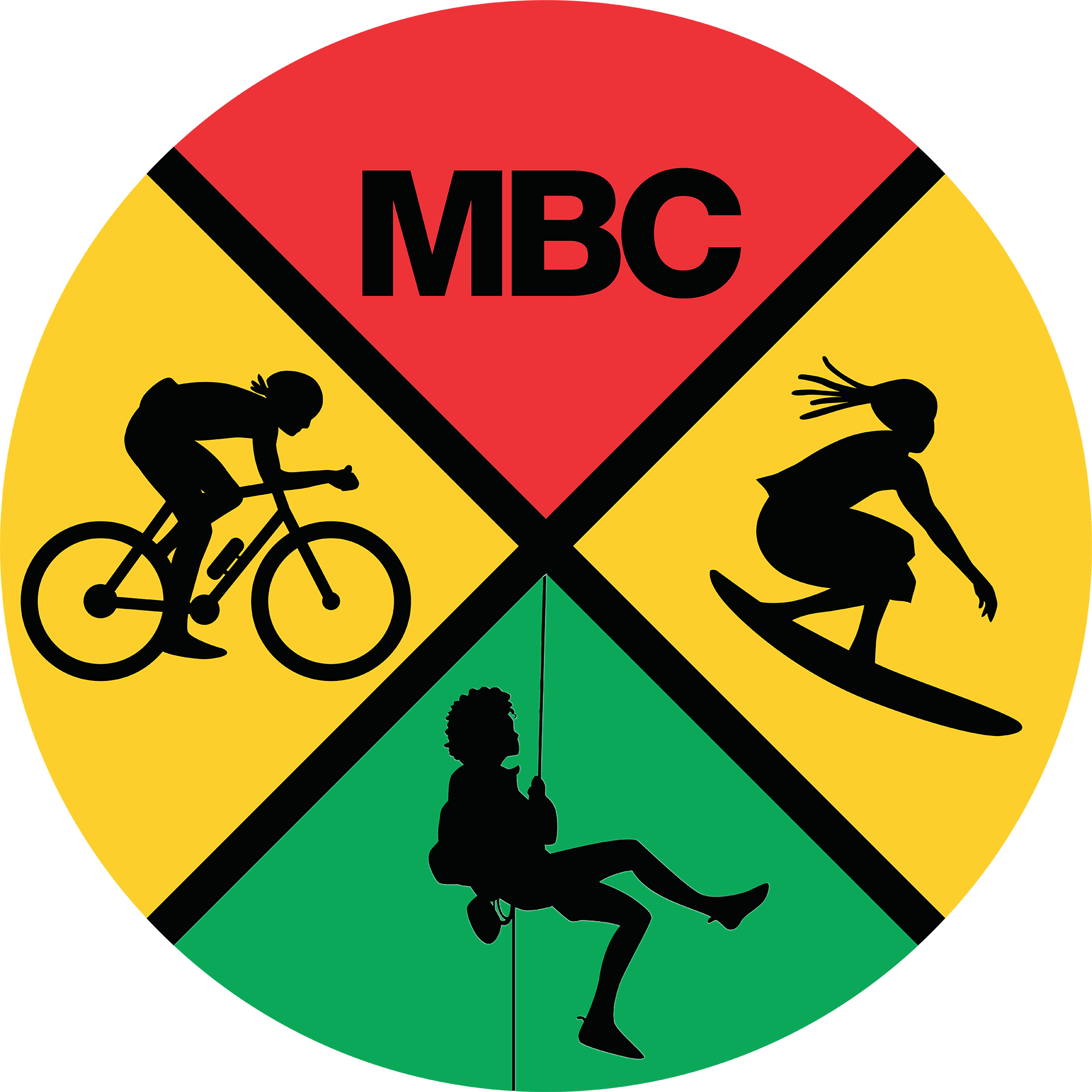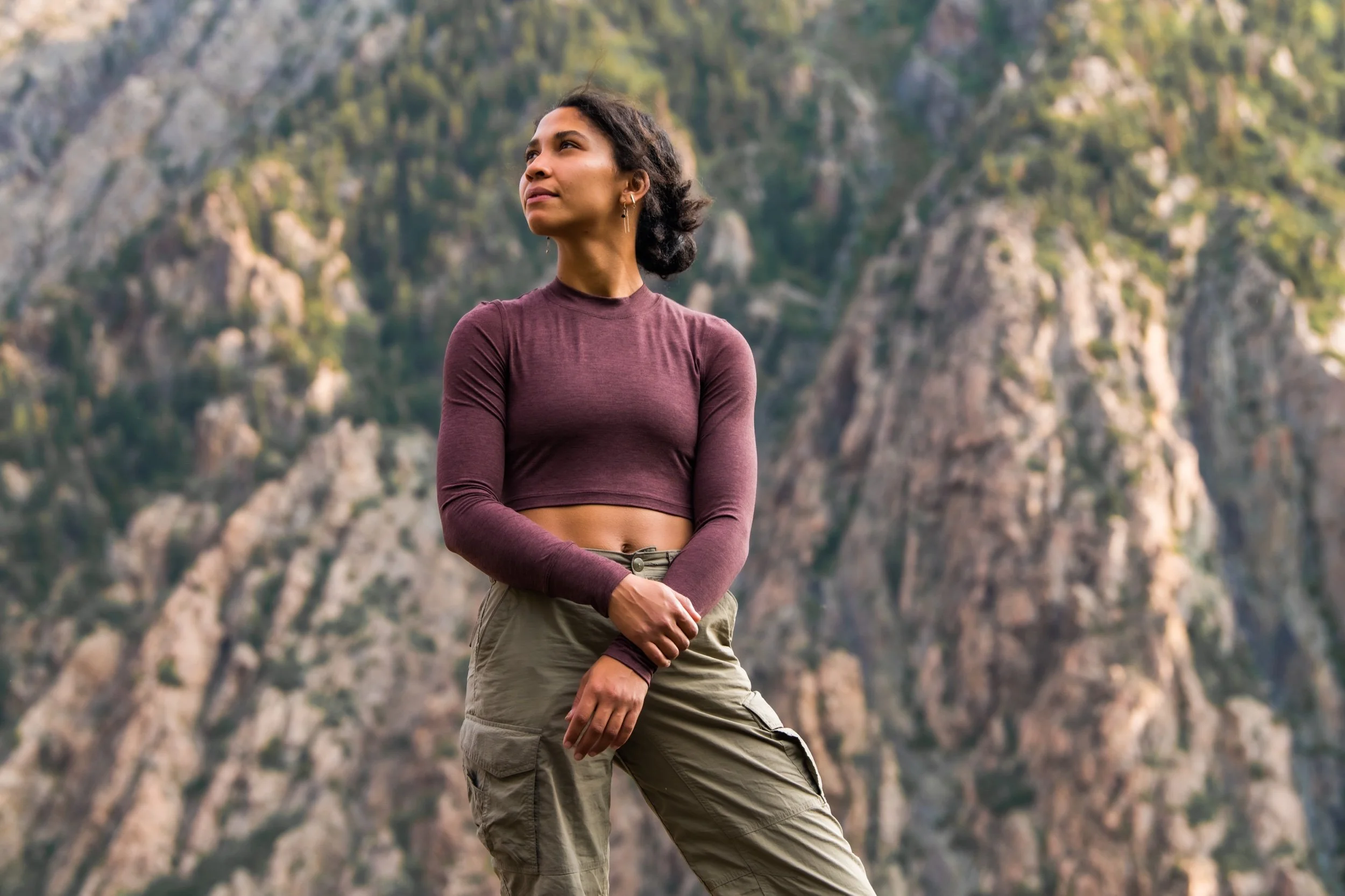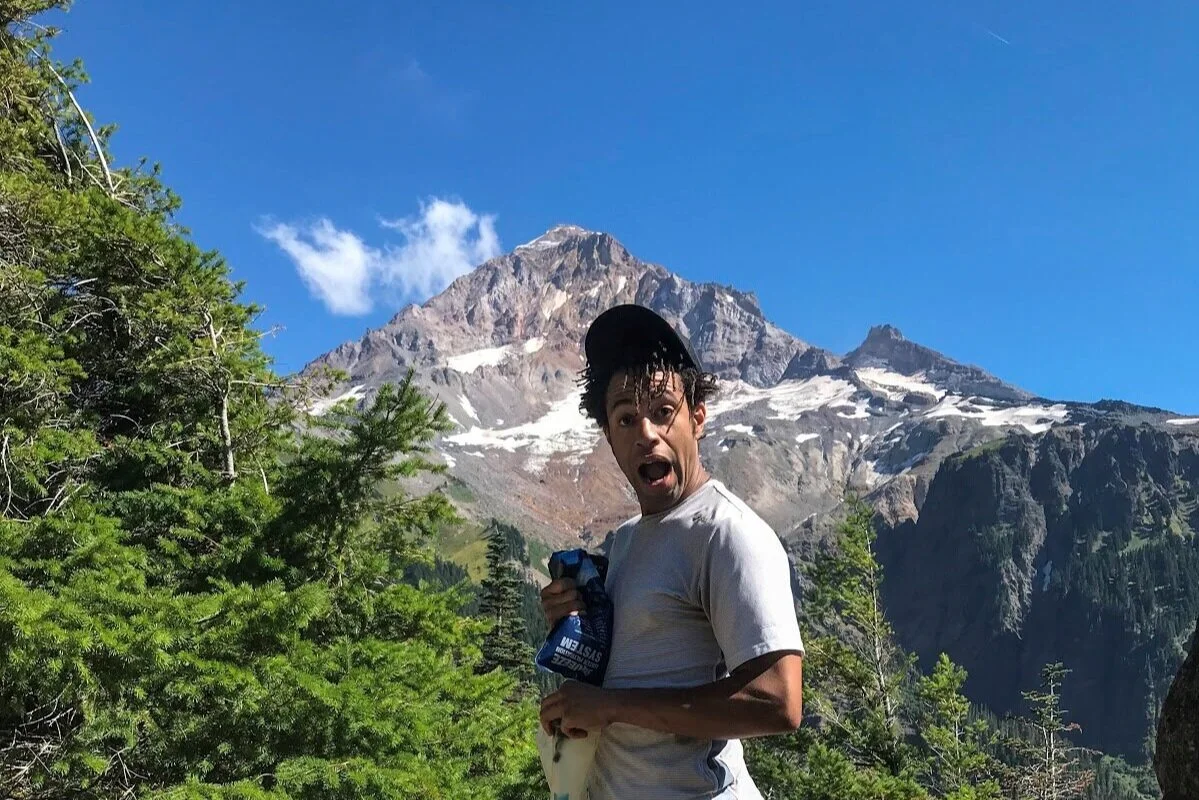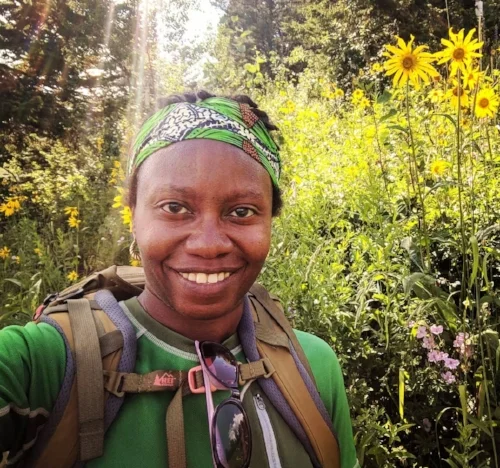Don’t Call It a Comeback: How to Make the Best of Your Injury
Injury happens.
And the worst part?
Sometimes, you just don’t know.
You don’t know what happens next.
You don’t know if you’ll fully recover.
You don’t know if you’ll ever feel that freedom again—that joie de vivre, that wild, indescribable sensation that reminds you what it means to be completely, unequivocally, unapologetically alive.
And that’s okay.
Outdoor pursuits are only a small part of what makes life beautiful. They’re nothing more than a single avenue of self-expression. And they don’t have the authority to define who you are or what you’re capable of.
Here are four incredible athletes of color who’ve used injury as a means of reinvention. Their stories bring to life the power and adaptability of the human spirit. Just don’t call it a comeback!
Kim Newmoney
Rollerskater / @newmoney.forever
Kim Newmoney in Los Angeles, California. Photo by Carima Robinson (@naniifyourenasty).
When Vietnamese-American roller skater and photographer Kim Newmoney shows up at the skate park, expect chaos. She’s a charming yet tenacious force to be reckoned with. Barani flips. Miller flips. Wu Tang, punk, smash, grab type style of roller skating with a little finesse tucked in her back pocket.
But when she broke her right fibula, everything stopped. Kim was out of commission for five months. And for someone whose reputation was so tied to the tricks and the flips, being forced to slow down was difficult.
“I was like, ‘What do I do now?’” Kim said. “My injury changed the trajectory of my skating, and I had to find new ways to be active. So I’d go out to the front yard, lay out a blanket, grab two weights, and work out everything else—arms, glutes, core, whatever I could manage.”
Kim started putting on muscle.
Got abs for the first time.
And began to see herself, and her body, differently.
“I was proud, and kind of surprised,” Kim said. “I felt like my body was going to fall apart. I thought I was going to let everything go. But instead, I did the opposite—I took better care of myself.”
Having an injury forces us to come face to face with who we are outside of our sport. And sometimes, we don’t like what we see. When you’re sidelined, sitting in your room, staring at the ceiling, wondering what comes next, who are you then?
“This is a time when you’ll learn a lot about yourself,” Kim said. “Just keep going. And listen to your body.”
“Remember, your purpose is to be,” she added. “There are multiple ways to approach recovery, and not every day’s gonna look the same. So take it one day at a time.”
Kim’s advice is to check in with ourselves. It’s easy to lose sight of the bigger picture when our world comes crashing down, but it’s important to stay anchored. The road to recovery can often feel long, dark, ominous, and lonely, but we mustn’t forget that even in the face of tragedy, we are never alone.
“I was getting care packages from friends I hadn’t even talked to in a while,” said Kim. “It was a reminder: even if you don’t feel like taking care of yourself, you should, because there are people out there who want you to.”
2. Kyra Poh
Skydiver / @kyrapoh
Kyra Poh skydiving in Empuriabrava, Spain. Photo by Ewan Cowie (@ewan_cowie_photography)
Kyra Poh was born to fly.
At 23 years old, she’s already achieved more than most people twice her age. A Red Bull extreme sports athlete, Singapore Sports SPEX Scholar, and Indoor Skydiving World Champion, Kyra has earned over 50 gold medals, three Guinness World Records, and once held the title of “World’s Fastest Flyer.”
But in January 2024, after a month of skydiving in Thailand and the Maldives, everything came to a halt when she suffered a serious ankle injury while indoor skydiving.
“Initially, the pain was bearable, but the thought of not being able to compete flashed through my mind, and I felt incredibly sad,” Kyra said. “I thought it might be a bad sprain, but after immediate X-rays, I was told I would need surgery that night.”
For someone who feels most free when soaring above the clouds, being grounded was difficult to manage. Her injury took her out of competition, forcing her to face something even harder than world-class training—patience.
“Patience is not one of my strengths,” Kyra said. “The hardest part was that my healing journey wasn’t linear. There were times when it got worse, especially when I had a serious infection that was supposed to last two weeks, but extended to two months.”
“I learned the hard way, with pain,” she added. “I was upset with my progress and overworked myself. When my doctors told me to take it slow and walk just a little each day, I walked 10,000 steps. But I know now that I only have one ankle, and I need to consider whether what I’m about to do is worth it.”
So she slowed down.
Kyra gave herself a year to heal and return better than ever. She focused on the present moment and chose not to dwell on what she couldn’t control.
“Your body can sense whether you believe you’re healing and improving or wallowing in self-pity,” Kyra said. “How you choose to see a situation can make or break how you move through it.”
These days, you’ll find Kyra back in the wild, twirling thousands of feet in the air, plummeting from the heavens at over 120 mph. She’s living her best life, cherishing every moment with the people she loves most.
“As a young athlete, I never really had the chance to experience a ‘typical' life as a teenager or young adult,” Kyra said. “This injury gave me the gift of time to form deeper and stronger connections. My family, friends, and teammates were always by my side, and a huge reason why I stayed so positive.”
Her advice to all of us?
“Believe in yourself,” said Kyra. “Life has so many beautiful things to offer—so many things to do, feel, and love. Shift your focus, enjoy the journey, and take it one step at a time.”
3. Annijke Wade
Mountain biker / @geodesicdome
Annijke Wade. Photo by Jay Melena.
Annijke Wade is revolutionizing the world of adaptive mountain biking. She’s a visionary with a ferocious, contagious, “forward is always the pace” attitude. And if there’s one thing I’ve learned from our interview, it’s that adaptive mountain biking is here to stay.
Her injury happened on Saturday, July 7th, 2021, while cruising down her favorite trail at Angel Fire Bike Park in New Mexico. One small misstep sent her airborne, and she slammed into the ground.
“My first thought was, ‘What’s happening to me?’” Annijke recalled. “Is this going to ruin my life?”
She was rushed to the emergency room. And after two days of uncertainty, her doctor confirmed the worst: a severe spinal cord injury.
She may never walk again.
But the next morning, as the gravity of her diagnosis began to settle, Annijke saw an Instagram post that would forever change her life.
“I saw another athlete with a spinal cord injury riding his adaptive mountain bike at a park in Colorado,” said Annijke. “Something just clicked, and I thought, ‘That’s what I want to do. I’m going to get back on a bike, and it’s going to be a bike like that.’”
Lying in the ICU, Annijke did what few people could in a moment like that—she looked forward. She had a vision, and nothing was going to stand in her way.
“Being able to take that news at face value and say, ‘Alright, walking’s off the table. What’s next?’ That’s what set things in motion for me,” Annijke said. “Having a specific goal helped me reframe my life entirely.”
Rebuilding from the ground up wasn’t (and still isn’t) easy. Tasks that once felt automatic became major milestones. Annijke had to relearn how to use the bathroom, put on pants, and drive.
“I had to learn to stop getting frustrated and, instead, focus on the moment,” said Annijke. “I prioritized what I wanted my life to look like three months, six months, and a year from then.”
“I asked, ‘Who am I as a person, and how do I want to show up in this world?’” she added. “My injury was an opportunity to stop everything and reevaluate what I wanted to bring back in.”
As a Black American outdoor athlete with a disability, Annijke’s injury added another marginalized layer to her already complex set of identities.
“One of the biggest challenges for people with disabilities is the cost of equipment,” said Annijke. “My goal is to use my outdoor industry experience to connect people with opportunities in the para off-road cycling world by giving them access to trails, education, and races.”
Today, Annijke is the founder of Dirtbound Cycling, a platform built to empower adaptive cyclists of all colors, shapes, and sizes. She’s also a board member of All Bikes Welcome and a vocal representative for diversity and inclusion in the outdoors.
“I’d love to see the sport of adaptive mountain biking grow and be fully integrated with mainstream mountain biking,” said Annijke. “I want more Black, brown, and people of color, especially those with disabilities, to feel empowered to be outside.”
“Because it doesn’t matter what you ride or how you ride it,” she added. “All that matters is giving people the chance to engage with their natural environment with joy in their hearts.”
4. Ayesha McGowan
Retired pro cyclist / @ayesuppose
Ayesha McGowan cruising in Girona, Spain. Photo by William Loyd (@bossmeem).
Ayesha McGowan made history as the first African-American woman to become a professional road cyclist by joining the UCI (Union Cycliste Internationale) Women’s WorldTeam, Liv Racing, in 2021.
Her love for bikes began with a violin strapped to her back while commuting to and from the legendary Berklee College of Music in Boston, Massachusetts.
But it wasn’t until she moved to New York that she discovered her competitive edge, racing alleycats (underground street races) and channeling her curiosity into learning what it takes to be the best.
“There’s power in deciding to do something and believing you can do it,” said Ayesha. “When I decided to go pro, I never doubted that I could. And a lot of people didn’t understand and still don’t.”
“Honestly, sometimes I don’t even understand it because it was such a wild goal,” she added. “It was really hard. But I believed, and I did it.”
Then everything changed.
Ayesha was diagnosed with uterine fibroids, non-cancerous tumors that caused serious health issues and required surgery via C-section.
She hasn’t yet fully recovered.
“There hasn’t been a lot of research on high-level athletes and C-sections,” said Ayesha. “Women’s health research is minimal to begin with, so I haven’t been able to get any straight answers.”
“I’ve accepted that this is probably something I’m going to have to deal with for a long time, maybe even forever,” she added. “Taking the pressure of competing at a high level off my shoulders is probably the best, or healthiest, thing I can do.”
Although she’s officially retired from the sport, Ayesha hasn’t stopped finding joy and purpose within the cycling world. Sure, she may not be able to race at the level she once did (at least for now), but her impact on cycling is as powerful as ever.
That’s why, during the pandemic, when things felt especially dark, and so much of the conversation around Blackness was sad and heavy, Ayesha launched Thee Abundance Project.
“There’s not a lack of people of color riding bikes,” said Ayesha. “There's a lack of people of color represented in the cycling industry.”
“For me, it’s always been about pushing for more representation across the cycling space, making sure people know we exist, we’re here, we ride, we care about bikes, and we love them, too.”
Her advice for us is to pause and look within.
“Be honest with yourself about what you want and what you’re willing to do to get it,” said Ayesha. “For a long time, I was fully dedicated to racing. There was nothing else I’d rather be doing. But that changed after a lot of injury and illness.”
“Being honest with myself, saying, ‘I don’t have to do this anymore,’ was huge,” she added. “It’s hard to accept when you’ve sacrificed so much, but it’s necessary.”
Ayesha is now taking time to reassess and reimagine what’s next. She currently lives in Spain, surrounded by people who love, support, and adore her. Her life has already taken some wild turns, from music student to teacher to pro cyclist. So who knows? Maybe another drastic shift is on the horizon.
Regardless of what happens, one thing is certain—her presence alone has reshaped the future of cycling. And there’s no doubt she’ll approach life the same way she always has—with curiosity, honesty, and an unshakeable belief in herself.
Photos:
Kim Newmoney in Los Angeles, California. Photo by Rafael Bustamante @bunnies_and_kitties
Kyra Poh skydiving in Empuriabrava, Spain. Photo by Ewan Cowie @ewan_cowie_photography
Annijke Wade at the Sea Otter Classic in Monterey, California. Photo by Jay Melena @jaystone_m
Ayesha McGowan cruising in Girona, Spain. Photo by William Loyd @bosmeem



























Having an injury forces us to come face to face with who we are outside of our sport. And sometimes, we don’t like what we see. When you’re sidelined, sitting in your room, staring at the ceiling, wondering what comes next, who are you then?
“This is a time when you’ll learn a lot about yourself,” Kim said. “Just keep going. And listen to your body.”